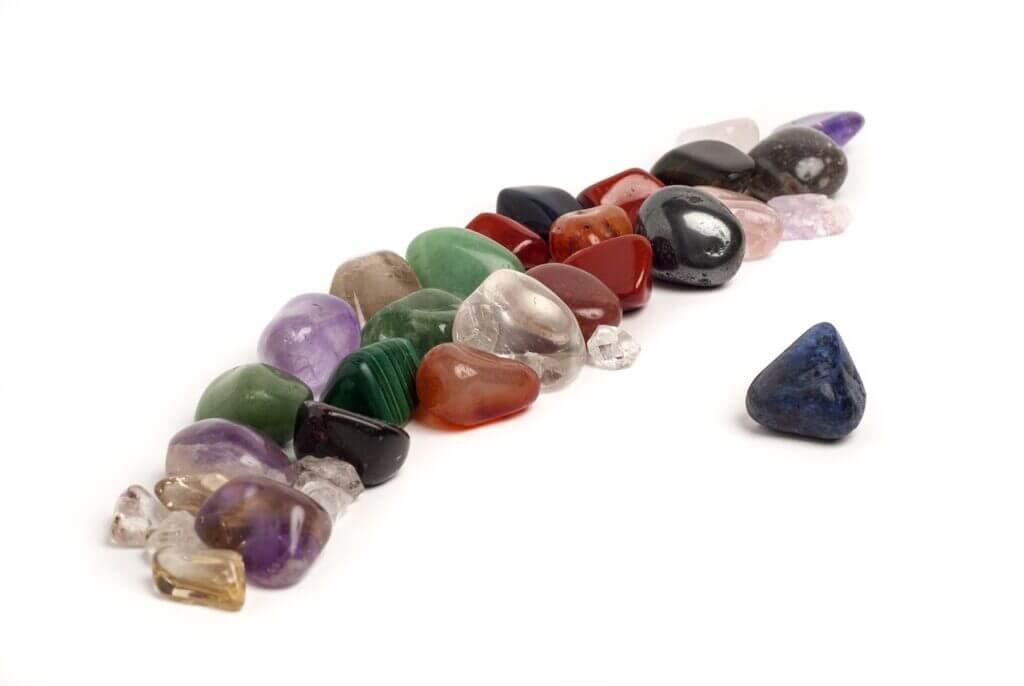What Is The Sister Stone To Amethyst?
What Is The Sister Stone To Amethyst? You’ve likely heard of amethyst, the radiant purple gemstone known for its alluring beauty and spiritual properties. But did you know amethyst has a sibling? Just like a caring sister, this little-known gem shares many qualities with amethyst, yet possesses its unique charm and mystique. This article gives you a tour into the engaging world of gemstones, specifically focusing on the sister stone to amethyst. Hold on tight; you’re about to embark on a sparkling adventure.

Understanding the Concept of Sister Stones
Gemology is a fascinating field that happens to carry its own unique terms and phrases, like “sister stones”. In general, sister stones refer to two or more gemstones that may share some core characteristics but are uniquely distinct in themselves.
Definition and significance of sister stones
“Sister stones” refer to two gemstones that are fundamentally similar, often because they’re born from the same mineral family. They may share common traits, be it colors, physical properties, or crystal structures, but their differentiating attributes make them distinctly unique. This duality, of similarity and difference, is a key aspect of their charm.
How sister stones are identified
Sister stones are primarily identified through their mineral characteristics. These might include their color, hardness, luster, streak, cleavage, fracturing, specific gravity, refractive index, and crystal habit. The identification process requires expert knowledge and specific tools, usually involving gemologists and finely tuned laboratory equipment.
The role of sister stones in gemology
In gemology, the concept of sister stones is essential as it helps to classify, study, and appreciate various gemstones. They help gemologists understand the different processes that form these stones and how subtle variations can lead to entirely different outcomes. This also affects their value, symbolism, and usage in various industries like jewelry-making and energy work.
Exploration of Amethyst
Amethyst, prized for its rich purple color and quartz origins, is one of the most famed gemstones in the world.
Brief history and origin of amethyst
Amethyst is one of the oldest known gemstones, with ancient records dating back as far as 25,000 B.C. The Greeks named it “amethystos,” meaning non-inebriated, and used it to ward off drunkenness. In terms of origin, most of today’s amethyst comes from Brazil and Uruguay.
Physical and metaphysical properties of amethyst
From a physical perspective, amethyst is a silicon dioxide with a hardness of 7 on the Mohs’ scale, placing it as pretty durable. Metaphysically, amethyst is touted for its calming properties and its ability to help cultivate tranquility.
Different varieties and uses of amethyst
Amethyst comes in various shades, from light pink violet to deep purple. It’s often used in jewelry, as cut and polished stones, or left in its natural crystal state for ornamental displays. Some also use it for its purported healing properties in crystal energy work.

Citrine: The Sister Stone to Amethyst
Just like amethyst, citrine is also a member of the quartz family, mainly earning the title of amethyst’s sister stone.
Reasons why Citrine is considered the sister stone to Amethyst
Citrine shares its origin story, many mineral properties, and its composition with amethyst. The primary differentiator – which also leads to their categorization as sister stones – is their color.
Similarities between Citrine and Amethyst
Both citrine and amethyst share plenty of similarities. They belong to the quartz family, they have similar hardness and durability, and they are also formed in the same manner.
Differences between Citrine and Amethyst
The main difference between citrine and amethyst is their color. While amethyst is known for its beguiling purple hues, citrine enchants with its warm, yellow to orange tones. These color differences come from trace element differences and varying degrees of iron oxidation.
Discovering Citrine
Citrine, less famed than its sister stone, is nonetheless a captivating gemstone.
History and origin of Citrine
The name citrine comes from the old French word “Citron,” meaning lemon, a nod to its yellow coloration. Like amethyst, citrine is also found in Brazil and Uruguay, along with other locations around the world.
Why Citrine is often mistaken for other gemstones
Due to its sun-like hues, citrine is often mistaken for topaz or even yellow sapphire.
Common applications and uses of Citrine
Citrine finds its main use in jewelry, appreciated for its warm colors and reasonable pricing. Beyond that, Citrine is a favored stone in the healing world, as it’s believed to attract wealth and abundance.

Metaphysical Properties of Citrine
Citrine is not a popular gemstone just for its physical appeal, it is also highly regarded in the metaphysical realm.
Citrine in crystal healing and energy work
In the realm of crystal healing, citrine is said to hold a solar quality, bringing light, warmth, and positive energy. It’s often used in manifestation practices and is thought to help raise self-esteem and self-confidence levels.
Symbolic and spiritual significance of Citrine
Spiritually, citrine is seen as a stone of imagination, manifestation, and personal will. It carries the power of the sun and is traditionally known as the merchant’s stone – help in attracting wealth and prosperity.
Citrine in folklore and mythology
In folklore, citrine has been used as a protection against snake venom and evil thoughts. It was also once believed to provide the power of invisibility when wrapped in a bay leaf and held in the hand.
Color Differences between Amethyst and Citrine
Though both amethyst and citrine share a lot in common, their color differences make them unique and exceedingly attractive.
The factors influencing coloration in gemstones
Colors in gemstones arise due to the presence of trace elements. When quartz is subjected to varying degrees of temperature and pressure, combined with differing quantities of iron, it results in the distinctive colors of both amethyst and citrine.
How Amethyst and Citrine get their distinctive colors
Amethyst gets its beautiful range of purple colors from irradiation, iron impurities, and in some cases, other transition metal impurities. Citrine’s coloration, on the other hand, comes from the ferric impurities being exposed to heat.
The effect of color on gemstone value and appeal
Color plays a significant role in a gemstone’s appeal and value. Generally, the more vibrant and clear the color, the higher the value.

The unique process of Ametrine
Ametrine is a unique gemstone resulting from a blend of amethyst and citrine.
Understanding how Ametrine, a blend of Amethyst and Citrine, forms
Ametrine is formed when amethyst and citrine reside in the same crystal, a rare occurrence caused by varying degrees of heat and pressure beneath the earth.
The unique properties of Ametrine
Ametrine captivates with its dual colors, usually half purple and half gold. Like its parent stones, it has a high hardness, making it perfect for all kinds of jewelry.
The value and uses of Ametrine
Ametrine, being relatively less common, is valuable to gem collectors and can be used in various forms of jewelry. It’s also used energetically for its combination of amethyst’s calming energy and citrine’s uplifting resonance.
Caring for and Cleaning Amethyst and Citrine
With their hardness level, both amethyst and citrine are reasonably hardy. However, proper care is still required to maintain their radiance for years to come.
The do’s and don’ts of cleaning Amethyst and Citrine
Do’s include cleaning with warm soapy water and a soft brush. Don’ts include avoiding steam or ultrasonic cleaners, keeping them away from prolonged exposure to heat or sunlight to avoid color fading.
How to properly store and care for these gemstones
It’s best to store these gemstones individually to avoid scratching with other jewelry. Try to keep them in a temperate environment, away from extreme temperatures and direct sunlight.
Impact of improper care on stones’ quality and durability
Improper care could lead to reduced shine, scratches, and even color fading. It’s always better to take preventive measures, so their beauty lasts longer.
Amethyst and Citrine in Jewelry
Beyond their physical and metaphysical properties, both amethyst and citrine are centrally featured in various jewelry forms.
Common types of jewelry featuring Amethyst and Citrine
These gemstones can be seen in almost every form of jewelry, be it rings, necklaces, bracelets, or earrings. Their various color shades offer versatility in style and design.
How to choose quality Amethyst and Citrine jewelry
When choosing, look at the color intensity, clarity, cut quality, and overall artistry. These attributes collectively deliver a fine piece of jewelry that retains its charm through the years.
Symbolism and meanings of wearing Amethyst and Citrine jewelry
While amethyst symbolizes calm and tranquility, citrine represents joy and energy. Wearing them not only adds beauty but it could also enhance one’s vibe, welcoming balance and stability. https://mauragemsandjewellery.co.uk/what-gemstone-symbolizes-eternal-life/
The Future of Amethyst and Citrine
As the whole world becomes more gem-literate, the appeal for specific stones like amethyst and citrine is only expected to grow.
Evolution in popularity and usage over time
Over the years, both amethyst and citrine have seen increased popularity in various sectors, from jewelry to home decor to spiritual practices.
Emerging trends in the use of Amethyst and Citrine
With the rising interest in conscious and spiritual living, amethyst and citrine see increased use in energy work. At the same time, continued prowess in jewelry making also drives their demand.
Predictions for the future of these gemstones
Given their unique blend of physical allure, spiritual significance, and affordability, both amethyst and citrine will continue to find favor with people across the board. As we step into the future, the allure of these sister stones continues to illuminate our lives.



